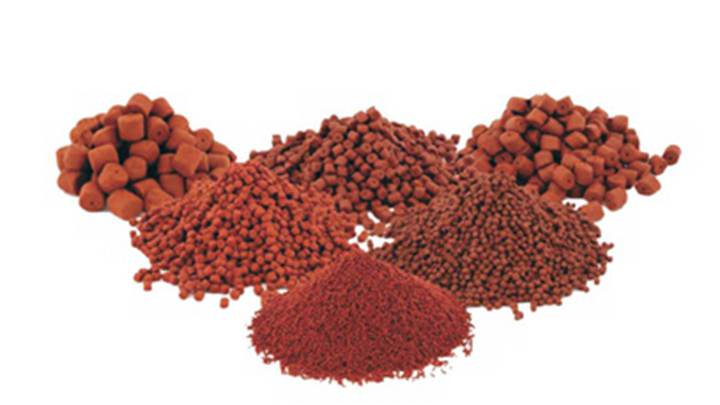In different growth stages of fish, there will be certain differences in the ratio of nutrients required by fish, which is to enable fish to grow healthier and faster. If the ratio of nutrients is not appropriate, it may lead to fish malnutrition, slow growth, and even serious consequences of fish diseases.
Therefore, we need to choose the appropriate fish food formula according to the type of fish and different growth stages, so as to ensure the comprehensive and balanced nutrition required by the fish, maximize the use of the nutritional value in the feed, and at the same time comply with economic principles and minimize the cost.
Fish feeding situations at different stages
At different stages of fish rearing, the shape and size of the feed consumed by the fish are also different. In order to maximize the use of the nutritional value in the feed, the feeding rate and feeding frequency of the fish also need to be considered. The best state of particles is: 1/3 of the size of the fish mouth.
| Fish Type | Fish size(g) | Feed shape | Feed size(mm) | Feeding rate(%of biomass/day) | Feeding frequency(Times/day) |
| Starter1 | PL25-1 | Crumble | 0.5-0.9 | 13-9 | 1-2 |
| Starter2 | 1-2 | Crumble | 0.9-1.2 | 9-6 | 2-4 |
| Starter3 | 2-4 | Crumble | 1.2-1.8 | 6-4 | 4 |
| Grower4 | 3-7 | Pellet | 1.8×2-3 | 5-3.5 | 4 |
| Grower5 | 6-15 | Pellet | 2.0×3-4 | 3.5-2.5 | 4 |
| Finisher6 | >12 | Pellet | 2.2×3-5 | 2.5-1.9 | 4-5 |
How to scientifically design fish grain pellet feed?
The steps of designing a fish food formula are generally: determine the type of feed material → determine the nutritional index → determine the range of feed dosage → determine the price of the feed material → establish a linear programming model and calculate the results, so as to obtain a good fish food feed formula.
1. Based on the standard of nutritional requirements
It is necessary to select the appropriate nutrient requirement standard according to the type, growth stage and growth rate of the fish, and determine the nutrient concentration of the fish food based on the actual breeding effect to meet the nutritional needs of the fish.
When formulating, it must first meet the fish’s requirements for feed energy and maintain the optimal ratio of protein to energy. The second is to focus on the ratio of protein to amino acid content in the feed to meet nutritional standards. Again, it is necessary to consider the characteristics of the digestive tract of fish. Since the digestive tract of fish is simple and primitive, it is difficult to digest and absorb crude fiber. Therefore, the content of crude fiber in the feed must be controlled to a minimum range, generally controlled at 3% to 17%, and sugar control. In 20% to 45%.
2. Pay attention to the comprehensive and balanced nutrition
When designing the formula of fish food, in addition to considering the content of each nutrient, we should also consider the comprehensiveness and balance of each nutrient, pay attention to the diversification of fish feed, and use several feed ingredients to complement each other.
The balance of protein and amino acids must be considered in the design of fish feed formula, that is, a variety of raw materials must be selected to complement each other to meet the requirements of nutritional standards.
3. Consider the nutritional and physiological characteristics of fish
The physiological characteristics of fish will affect the ratio of nutrients in fish feed. For example, for fish that cannot make good use of carbohydrates, the content of carbohydrates should be minimized in the fish feed.
According to the digestive physiological characteristics, feeding habits and preferences of different fish, choose appropriate feed. For example, the protein content of blood meal is as high as 83.3%, but the digestible protein is only 19.3%; the protein of meat and bone meal is only 48.6%, but because the digestibility is 75%, the digestible protein is 36.5%, which is twice as high as blood meal. Another example is the poor palatability of rapeseed cake, which may lead to insufficient food intake and waste of feed.
4. Comply with economic principles
In fish production and breeding, the cost of fish food usually accounts for 70%-80% of the total cost of aquaculture. Therefore, when designing fish food, attention should be paid to local natural conditions, adopt measures to local conditions, and use local materials to formulate low-cost fish food formulas.
5. Choose the suitable additives
The raw materials of compound feed are mainly animal raw materials and plant raw materials. In order to improve the nutritional composition and feed efficiency, it is also necessary to consider adding mixed vitamins, mixed inorganic salts, colorants, attractants, adhesives and other additives.
Fish food recipe reference
Based on years of experience, we have summarized a set of feed formulas that are relatively suitable for various fish for reference. Different types of fish feed have different ratios. Our factory can configure qualified feed formulas according to customer needs, and conduct trial production in the factory for customer inspection. Customers are welcome to come and call.
- Small fish recipe: Protein content: 34-36%
Ingredients: Corn meal: 30%, Fish meal: 20%, Rice bran: 5%, Soybean meal: 30%, Bone meal: 2%, Wheat bran meal: 13% - Medium Fish Recipe: Protein Content: 30%
Ingredients: Corn Meal: 30%, Fish Meal: 15%, Rice Bran: 10%, Soybean Meal: 25%, Bone Meal: 2%, Wheat bran meal: 18% - Big Fish Formula: Protein Content: 28%
Ingredients: Corn meal: 35%, Fish meal: 15%, Rice bran: 10%, Soybean meal: 20%, Bone meal: 2%, Wheat bran meal: 18%
